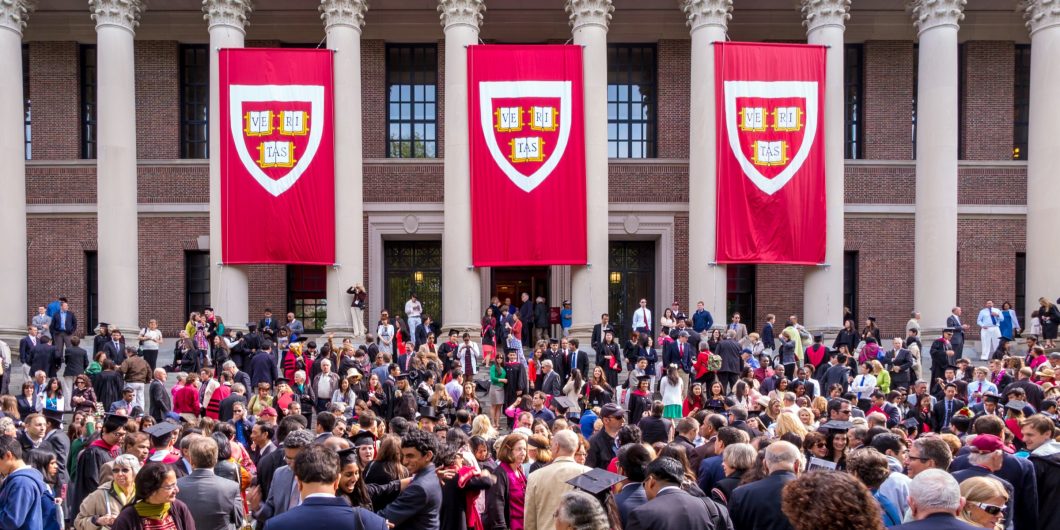If the liberal arts are indeed good for the soul, they should be taught to people of all ages.
Affirmative Action Made New
About a year ago, a major newspaper, mingling its editorial and news pages as is now usual, published charts showing flat Black enrollment at a number of major universities in an effort to influence the then-pending Supreme Court affirmative action litigation. There was no qualitative assessment including such matters as dropouts, remedial programs, or school discipline. The approach was reminiscent of that once voiced by former Health, Education, and Welfare Secretary Joseph Califano: that since Harvard PhDs do well, American Blacks would be aided if more of them were to receive Harvard PhDs.
This approach is now seen to have failed. The Black population is now equaled or eclipsed in many places by the numbers of Hispanics and Asians. Intermarriage, which Tocqueville regarded as the index of equality in society, has increased, requiring something in the nature of a Nuremberg law to accurately bestow racial preferences, which in any case flowed disproportionately to the professional classes and West Indian and other immigrants. A visibly failed and arbitrary program continued to be fueled by virtue-signaling among lawyers and journalists.
Colleges were burdened with large remedial programs. Legal departments and admissions and discipline offices consumed funds that once would have been devoted to core subjects. Administrators grew to out-number professors. The introduction of a lump of under-prepared and hence unhappy students, as at Columbia and Yale in 1968, even contributed to riots, and academic freedom has been endangered since.
Moreover, unfashionable disadvantaged groups have not benefitted at all. Appalachian high schools, Catholic schools in the Rust Belt, and Christian schools in the South have not been favored by Ivy League admissions officers.
Interest-group liberalism does not provide an impulse to academic excellence. As observed by Judge Learned Hand, “The herd is regaining its ancient and evil primacy; civilization is being reversed, for it has consisted of exactly the opposite process of individualization.” Hand made himself unpopular in 1958 by declaring that the only tenable basis for the desegregation decisions was a ban on racial classifications. After 65 years of travail and tribulations, the Supreme Court has taken his point.
Administrators of the vanishing affirmative action dispensation have overlooked the admonitions of George Kennan that schools exist to serve intellectual and not social purposes, those of Edward Levi that universities cannot become microcosms of society, and those of Bertrand Russell that society as a whole benefits from academic elitism.
Recent and proposed admissions policies promote a focus on everything but the knowledge that ought to be possessed by high school graduates, an approach not duplicated in Great Britain and France, with their A-levels and baccalaureate examinations. This has absolved colleges from taking any interest in the curricula of high schools or the education and qualifications of teachers in them. As a result, American high schools and colleges produce too few science graduates, and scientific jobs are either bestowed on recent, frequently short-term, immigrants or are outsourced to foreign countries.
Nevertheless, there are certainly underprivileged people in our society—some of them racial or ethnic minorities, others not—who could greatly benefit from policies designed to elevate their educational and economic attainment without abandoning merit. What would an action program renouncing ethnic categories and embracing individualistic liberalism look like?
First, like the National Merit Scholarship program and the one-time New York State Regents’ Scholarships, it would reward demonstrated achievement in high school. The British and French A-Level and Baccalaureate examinations do this. Once upon a time, American universities set their own entrance examinations. Now that few require submission of the College Board achievement tests in subject matter, and a reduced number require SAT tests (really tests of elementary school skills), the only incentive to subject matter excellence left is the College Board Advanced Placement examinations. As the recent controversy in Florida indicates, even some of these have been corrupted and politicized. Any college that wants to be thought of as a serious institution preparing graduates for teaching, public life, or the sciences should use these as the principal criteria for admission.
Second, it would provide paths to residential higher education for those performing well in post-high-school distance learning programs, like MOOC (Massive Open Online Courses) programs offered by MIT and other American universities, the courses offered by the University of Maryland-University College once limited to Americans abroad, and the similar programs of the Open University in Great Britain and UNISA in South Africa. The Open University was rightly regarded by the otherwise lackluster Prime Minister Harold Wilson as his most notable achievement in office. UNISA educated most of the Robben Island prisoners who made up Nelson Mandela’s first cabinet. Distance learning is useful not only for prisoners but also for housewives and career-changers who are thereby spared the need to devote many hours a week commuting to and from community colleges. Successful programs include a week or two a year of intensive residential study to motivate and discipline students and give them a sense of fellow-feeling. Yet, as a recent study in Maryland demonstrated, teachers’ unions fought tooth and nail against the facilitation of distance learning, by requiring cumbersome approval of each local course by union-controlled state agencies, leaving American schools totally unprepared for the COVID epidemic.
These opportunities, if well publicized, should produce minority enrollments similar to those elicited by the present corrupt system, with lower dropout rates, no costs for remediation, and fewer discipline problems.
Third, a reasonable action plan should reserve substantial parts of upper-level classes for students doing well at community colleges and the military. These sources of recruitment have been almost totally neglected by Ivy League and other admissions officers, an exception being a small program for the military instituted by the late Dartmouth President James Wright. Since today’s military is significantly recruited from high school dropouts and others lacking higher education, such programs would be an important source of social mobility. The generation of post-World War II students admitted under the G.I. Bill brought an atmosphere of greater maturity to American colleges, which has been lost as the adequacy of military educational stipends has been allowed to wither.
Fourth, universities should provide facilities, including child care facilities, for mature female undergraduates, as at Lucy Cavendish College, Cambridge in recognition of the fact that such students are apt to be highly motivated, and provide a good example of academic commitment to other students. The “sexual revolution” brought on an unexpected explosion in unwed motherhood, to the point where 40% of new births and 70% of births among Blacks involve fatherless families. What was once an exceptional circumstance involving 4% of births is now a more usual one, yet colleges have done little or nothing to assist those damaged by the new dispensation, who are not members of the academic and professional classes visible to them.
Finally, a merit-based plan should encourage early career or mid-career enrollment to persons without a college background who have proven themselves in business, government, or the military, on the pattern of the Nieman Fellowships for journalists at Harvard and the Pew and Press Fellowships in England. Mid-career education has been neglected in the United States. Even the military “war colleges” have been allowed to wither; the Foreign Service Institute offers only rudimentary and short-term language programs. Senator Robert Taft’s proposal for an Intelligence Reserve Corps based on something like the World War II Navy School for Oriental Languages has not found favor. In consequence, American businesses are disadvantaged in competing for new markets in Brazil and ex-Portuguese Africa, in the Far East, and in Central Asia.
These opportunities, if well publicized, should produce minority enrollments similar to those elicited by the present corrupt system, with lower dropout rates, no costs for remediation, and fewer discipline problems. They reward the deserving rather than the undeserving, the mature rather than the immature, and aspire not to a perfectly equal society, but to an open one.
The emotional fuel for “affirmative action” was the plight of a Black underclass in our large cities, who benefitted not at all from it. What they need are work programs like the New Deal’s Civilian Conservation Corps, uncontroversial when it was ended by wartime labor demands. Also needed is a larger and more incentivized army so as to avoid the repeated re-deployments into war zones that have produced a massive suicide rate among recent veterans. An inner-city generation needs to be shown portions of the nation far removed from the two or three blocks into which they have been confined while growing up, and needs to be introduced to the disciplines provided by regular hours, exercise, showers, and alarm clocks.
Inner-city and other high school dropouts deserve help through government-sponsored work programs like the CCC and short-term residential vocational courses like those once offered by Hampton Institute and Tuskegee Institute (which have since become conventional four-year colleges). The last two measures are not within the means of higher education institutions, however committed. They should stick to their proper business.



